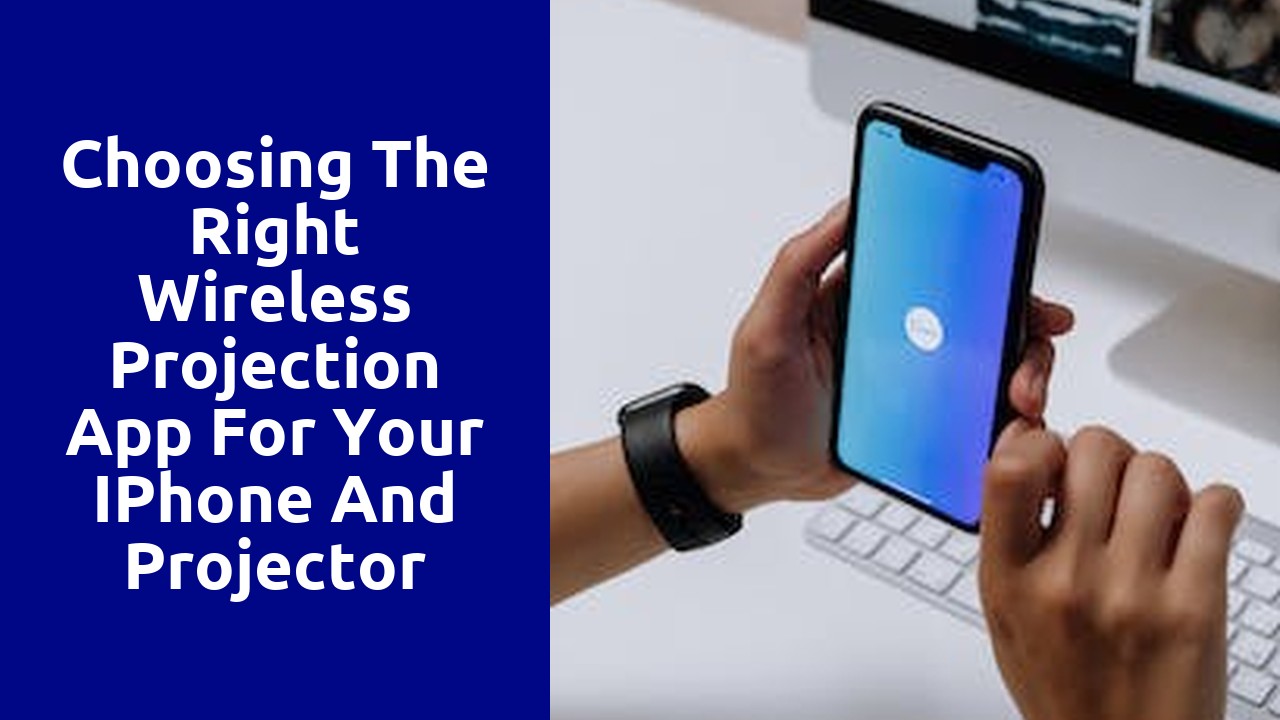

Wireless projection has become an essential tool in today's fast-paced world, revolutionizing the way we share and present information. Gone are the days of being tethered by cables and limited by physical connections. With wireless projection, users can effortlessly display content from their laptops, tablets, or smartphones onto a larger screen or projector without the hassle of cords and adapters.
One key advantage of wireless projection is its convenience. Whether it's in a classroom, conference room, or even at home, the ability to easily connect and share content wirelessly provides a level of flexibility and freedom that was previously unattainable. Users can quickly switch between presentations, share documents, or even stream videos with minimal effort, enhancing collaboration and productivity. This versatility makes wireless projection a valuable asset for educators, professionals, and anyone who relies on visual aids to communicate their ideas effectively.
In today's fast-paced world, technology has become an integral part of our daily lives. With the advent of wireless projection apps, the way we share and present information has been revolutionized. Gone are the days of tangled cables and restrictive wired connections. These innovative apps provide a seamless and convenient way to project your screen wirelessly, whether it be for presentations, collaborations, or simply for entertainment purposes.
One of the key benefits of wireless projection apps is the flexibility they offer. Users can effortlessly connect their devices, such as smartphones, tablets, or laptops, to compatible screens or projectors without the need for any physical cables. This eliminates the hassle of searching for the right cables, untangling them, and connecting them correctly. With just a few taps on your device, you can instantly share your screen with a larger audience, allowing for a more engaging and interactive experience. Additionally, this convenience extends to multiple devices, enabling simultaneous screen sharing and collaboration, making it ideal for small meetings or group projects.
When it comes to choosing a wireless projection app, there are a few key features that you should be on the lookout for. First and foremost, ease of use is crucial. You want an app that is intuitive and user-friendly, allowing you to effortlessly connect your device to a projector or display without any technical hiccups. Additionally, compatibility is another important factor to consider. Make sure the app is compatible with a wide range of devices and operating systems, ensuring that you can connect seamlessly regardless of what device you are using.
Another essential feature to consider is the ability to share content from multiple sources. A good wireless projection app should allow you to project not only from your device's local storage but also from cloud storage platforms or streaming services. This functionality opens up a world of possibilities, enabling you to easily showcase videos, presentations, or even live demos without the hassle of transferring files. By having the flexibility to project from different sources, you can enhance your presentations and collaborations with ease.
In conclusion, when selecting a wireless projection app, keep in mind the importance of ease of use, compatibility, and the ability to project from multiple sources. By considering these key features, you can ensure that you choose an app that will meet your needs and enable seamless wireless projection experiences.
When it comes to pairing your iPhone with a projector, there are a few compatibility considerations worth keeping in mind. First and foremost, it's important to ensure that your iPhone and the projector you are using have compatible connection ports. Some projectors may have HDMI ports, while others may use VGA or even USB-C. Similarly, iPhones come with different types of ports depending on the model, such as Lightning or USB-C. Double-checking the available ports on both your iPhone and the projector can save you from frustration and disappointment.
Another factor to consider is the operating system of your iPhone. Compatibility issues can arise if you have an older iPhone running on an outdated operating system, while the projector requires a newer version. Be sure to update your iPhone's software to the latest version available, which can usually be done by navigating to Settings > General > Software Update. Additionally, some projectors may require specific apps or software to be downloaded on your iPhone in order to establish a successful connection. Researching and downloading any necessary apps beforehand can make the pairing process smoother.
As app usage continues to grow exponentially, it is essential for businesses to evaluate the performance and user experience of their apps. A well-performing app can make or break a user's experience, and ultimately determine its success. Evaluating app performance involves measuring factors such as loading speed, responsiveness, and stability. By thoroughly assessing these aspects, developers can identify any potential bottlenecks or issues that may hinder the app's performance. Additionally, analyzing user experience is equally important in order to understand how users interact with the app, their satisfaction levels, and any pain points they may encounter. This data is invaluable in making necessary improvements to enhance the overall user experience and ensure user retention.
In the digital age, protecting data privacy and ensuring data protection has become paramount. With the ever-increasing amount of sensitive information being stored and transmitted online, it is more important than ever to implement robust security measures in order to safeguard against any potential breaches.
One key component of data privacy and protection is the use of strong encryption methods. By encrypting data, it becomes unreadable and useless to unauthorized individuals, making it a valuable security measure. Additionally, implementing layers of authentication and access controls can further enhance data protection. This can include measures such as two-factor authentication, where users must provide two pieces of evidence to verify their identity, or limiting access to highly confidential information to a select group of trusted individuals. By enforcing strict controls over who can access data, the risk of unauthorized access is significantly mitigated.